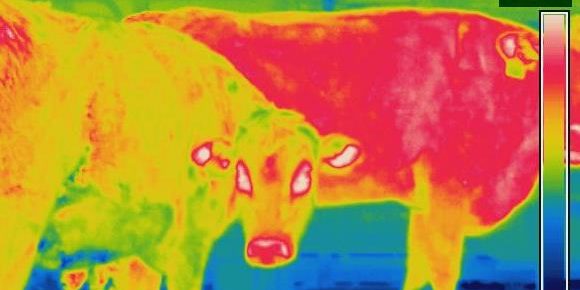LIC Genomics/ Biology Team
Heifers from LIC sire, Matrix, had inherited a genetic mutation and passed it on to his daughters. DNA sequence analysis quickly pin-pointed a genetic defect in a key structural part of prolactin, a hormone produced in the pituitary gland and known to be vital for regulating milk production and coat growth.The team then investigated a cattle breed (Senepol) with a slick (short-haired) coat, known to be heat tolerant.
Discovery of these mutations defined a new function for the prolactin hormone pathway in regulating the activity of sweat glands and sweat secretion, crucial for thermoregulation in cattle. In the Senepol, sweat gland activity is increased and in the “hairy” cows, sweating activity was shown to be halved.
A breeding programme to introduce the slick, heat tolerance trait into NZ dairy cattle has begun potentially enabling introduction of NZ cattle into tropical and sub-tropical climates.
LIC Genomics/ Biology Team
LIC
Gallagher Agricultural Science Award
Heifers from LIC sire, Matrix, had inherited a genetic mutation and passed it on to his daughters. DNA sequence analysis quickly pin-pointed a genetic defect in a key structural part of prolactin, a hormone produced in the pituitary gland and known to be vital for regulating milk production and coat growth.The team then investigated a cattle breed (Senepol) with a slick (short-haired) coat, known to be heat tolerant.
Discovery of these mutations defined a new function for the prolactin hormone pathway in regulating the activity of sweat glands and sweat secretion, crucial for thermoregulation in cattle. In the Senepol, sweat gland activity is increased and in the “hairy” cows, sweating activity was shown to be halved.
A breeding programme to introduce the slick, heat tolerance trait into NZ dairy cattle has begun potentially enabling introduction of NZ cattle into tropical and sub-tropical climates.





